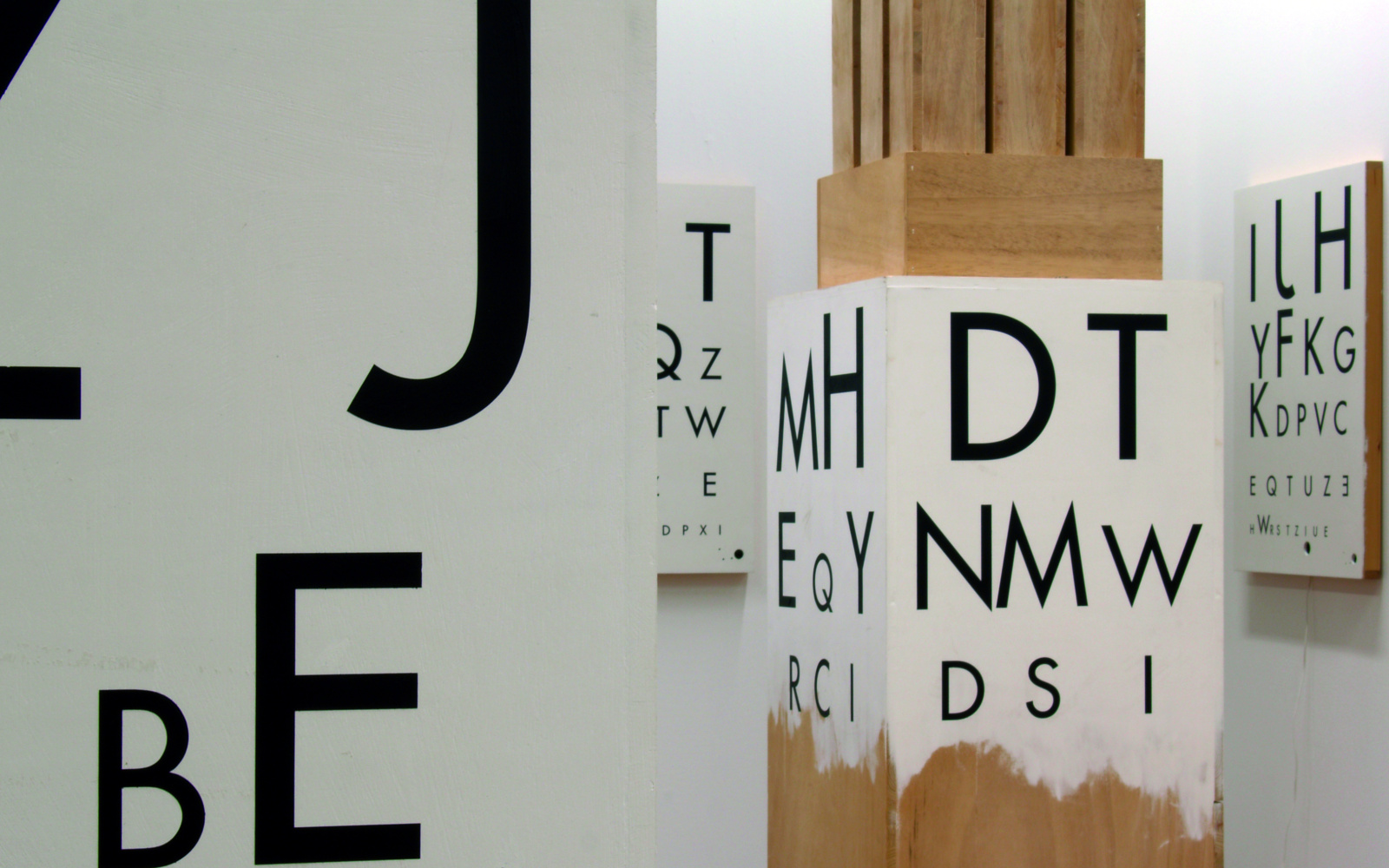- Exhibition
Stephan von Huene: Border Crosser, Border Mover
Fri, December 09, 2005 – Sun, June 18, 2006
- Location
- ZKM | Media Museum
The installation »TischTänzer«, possibly Stephan von Huene’s “greatest work”, as Horst Bredekamp once put it, forms part of the ZKM Collection and has been on show in the Media Museum for the past year. The »TischTänzer« exemplifies virtually everything that interested and motivated the artist throughout his lifetime and exerted a determining influence on his work: sound, tone, language, rhetoric – body, man, person, machine; perception, chaos, order, logic. An aura of fascination surrounds the way in which von Huene succeeded in making opposites visible and audible, for instance when, thanks to the intermingling of language, music, dance and lighting control, the objects in the room constitute the happening space and turn it into an experience space. It is in the very nature of his works, which are a way of exploring perception, that the artist evades not only the traditional concept of classical art but also the widely held notion of what constitutes media art.
The meeting of man and machine
Von Huene’s view of art was that it provided an opportunity of extending the boundaries in the direction of those sciences which, due to the logical and empirical constraints imposed on them by the methods they employ, exclude adjoining areas from their perception. He was concerned not just with the art object but with the critical reflection of the method.
The small pencil drawing »Untitled« dating from around 1997 is a self-portrait of the artist. His head lies on the table hidden in the angle of his right arm. His left arm with its outsized, outspread hand is stretched demonstratively, one might say imploringly, upwards revealing – like banners on a flag mast – a list of terms, names and topics that interested Stephan von Huene. Particularly noteworthy is the mention of inter-action, the potential of which – in von Huene’s view - could only be tapped in the form of intra-action. Here the media artist was pointing to a definition that was very remote from the favourite and often encountered position of a virtual reality machinery.
In von Huene’s “theatre of machines” (Achatz von Müller) man and machine confront each other in an odd way that makes their mutual impact unpredictable. Von Huene refused to use an interface to attach people to the drip of the machine or, on the other hand, to demonise the machine. In von Huene’s theatre there is a stage for both forms of existence, which confront each other in a curious and unpredictable manner in a meeting that is sometimes unnerving and at others funny.
Of Language and Sound
The »Magic Flute« (1985) can be heard thanks not to Mozart’s music, but to the use of the libretto by Schikaneder, from which the characteristic vowels are extracted and transformed into sounds. The audience is thus invited “to experience the same subjective creative process as Schikaneder and then to experience his own magic flute” (Stephan von Huene). Lexichaos, Vom Verstehen des Missverstehens zum Missverstehen des Verständlichen (1990) revolves around language and the sounds it makes – not from an individual, subjective point of view but rather from the interaction between sounds and signs, listening and seeing. In one of his last works, »Sirenen Low« (1999) Stephan von Huene examined the ancient text of the Odyssey, which in recent years has also inspired media artists like Friedrich Kittler to research into the origins of language as a medium. Here, language as sound is also the sound of seduction.
It was not clear, simple answers that Stephan von Huene hoped to find. Rather, he searched for the magic to be found in or behind things, a magic that is as inherent in a scientific study as it is in the texts of the Rosicrucians or political speeches. This, not least, is the reason why von Huene's works fascinate audiences and transport them into a very special world that emerges beyond merely affirmative machine art - although he never hid his computers, lifting magnets, projectors, control units and DVD players. The exhibition »Stephan von Huene - Border Crosser, Border Mover« provides a deeper insight into von Huene’s activities as a »pictorial scientist« or, as Achatz von Müller said, as a “cognitive magician”.
Imprint
- Curator
Team
Michel Frank (technical participation)
Mirco Frass (technical participation)
Barbara Könches (project management)
Christian Nainggolan (technical participation)
